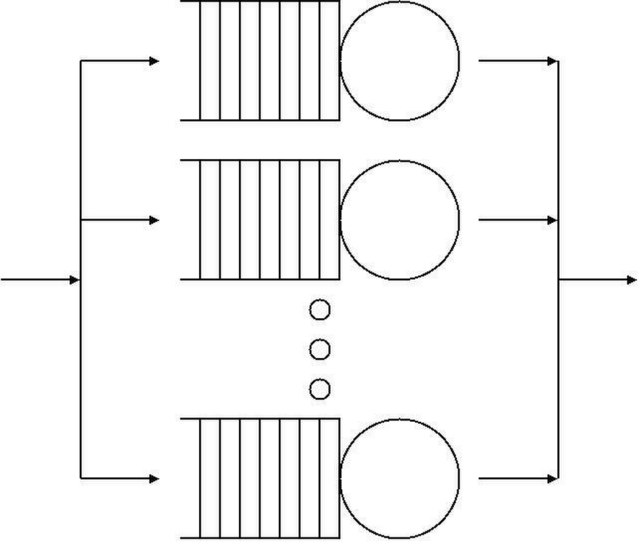Queue areas are places in which people queue for goods or services. Such a group of people is known as a queue or line, and the people are said to be waiting or standing in a queue or in line, respectively. Occasionally, both the British and American terms are combined to form the term "queue line".
Tai Po Voting queue
A queue area at a food store in New York City
People lined up when boarding a suburban bus in Prague
1943 soup kitchen queue in Aarhus, Denmark
Queueing theory is the mathematical study of waiting lines, or queues. A queueing model is constructed so that queue lengths and waiting time can be predicted. Queueing theory is generally considered a branch of operations research because the results are often used when making business decisions about the resources needed to provide a service.
Queue networks are systems in which single queues are connected by a routing network. In this image, servers are represented by circles, queues by a series of rectangles and the routing network by arrows. In the study of queue networks one typically tries to obtain the equilibrium distribution of the network, although in many applications the study of the transient state is fundamental.





